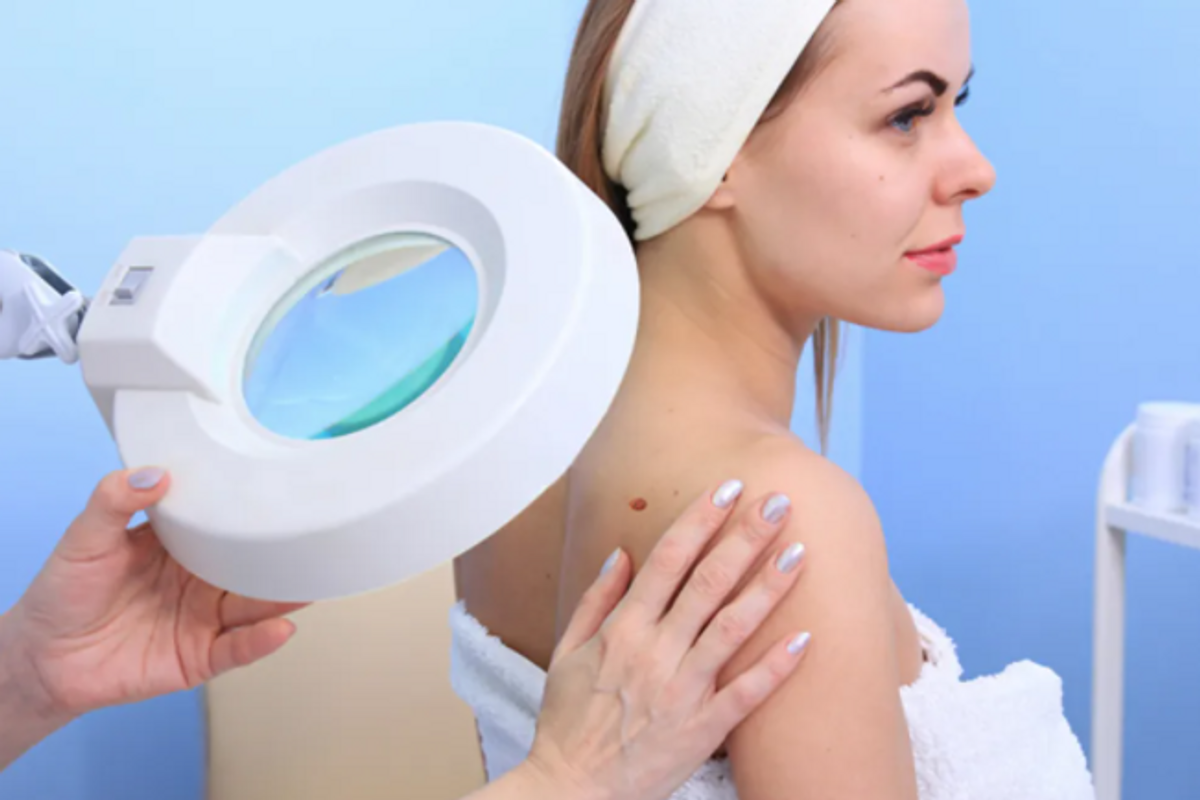Most of us know we can get sunburned when we go to the beach or the lake in the summer, so we slather on the sunscreen. But we need to remember to protect all exposed skin at all times of the year, because the sun can damage the skin anytime, anywhere. And skin cancer can show up in unexpected places on the body.
Too often, we miss applying sunscreen to some areas—or we don't apply sunscreen at all because it's cloudy or we think we won't be out long enough. That can lead to serious skin damage—or worse, cancer.
Basal and squamous cell cancers are the most common kinds of skin cancer, and they usually develop on sun-exposed skin, like the face, ears, neck, lips, back, arms and hands, according to the American Cancer Society (ACS). Rarely, these types of cancer appear on skin not exposed to the sun.
Melanoma, which is a much less common but more deadly type of skin cancer, can start on nearly any part of the body, even in places not normally exposed to the sun, such as the genital or anal areas. It can even start in parts of the body other than on the skin, such as the eyes or mouth. Other rare skin cancers also can start in various parts of the body.
HealthyWomen consulted two New York City–based dermatologists, Michele S. Green, MD, and Sejal K. Shah, MD, to find out some common places you can get skin cancer that many people don't think about. Here's their list:
- scalp
- inner ear (where you would place a Q-tip)
- buttocks
- genitals
- underneath the nail
- in-between fingers and toes
- soles of the feet
- palms of hands
- lips
So, how do you prevent skin cancer in these areas?
Avoiding prolonged exposure to the sun in the heat of the day (between 10 a.m. and 4 p.m.) is the best prevention, according to the ACS. If you must be out, seek shade when possible and wear protective clothing like long-sleeved shirts made of tightly woven fabrics and wide-brimmed hats.
Sunscreen also provides some protection against the sun's rays, especially when used properly. That means, choose a sunscreen with broad-spectrum protection and a sun protection factor (SPF) of 30 or higher. Apply liberally to all unprotected skin and reapply every two hours—more often if you're swimming or sweating.
For the scalp, Green suggests using a spray sunscreen to avoid greasy hair, although spray products may not provide the same protection as traditional sunscreen. For added protection, wear a hat.
Be sure to apply sunscreen to your ears and the tops of your hands and feet when you're outdoors, Shah reminds. Protect your lips with a broad-spectrum lip balm.
And don't forget to protect your eyes. Wearing sunglasses that provide 100 percent protection against UVA and UVB rays protects the delicate area around your eyes and, of course, your eyeballs, Shah says.
How do you detect skin cancer?
Whether skin cancer is hidden between your toes or is right on the tip of your nose, it can be hard to detect. The first step in detecting abnormalities begins with you. Examine your skin once a month for any suspicious changes. Look for changes in color, size and surface texture of a mole. Sores that won't heal may also indicate a cancerous or precancerous condition that needs attention.
If you notice anything suspicious, see your primary care physician immediately. He or she may refer you to a dermatologist, a physician with special training in skin care and skin disorders.
When you go for your checkup, be sure to let your physician check everywhere. Make sure all your skin is exposed—to the doctor, not the sun.





